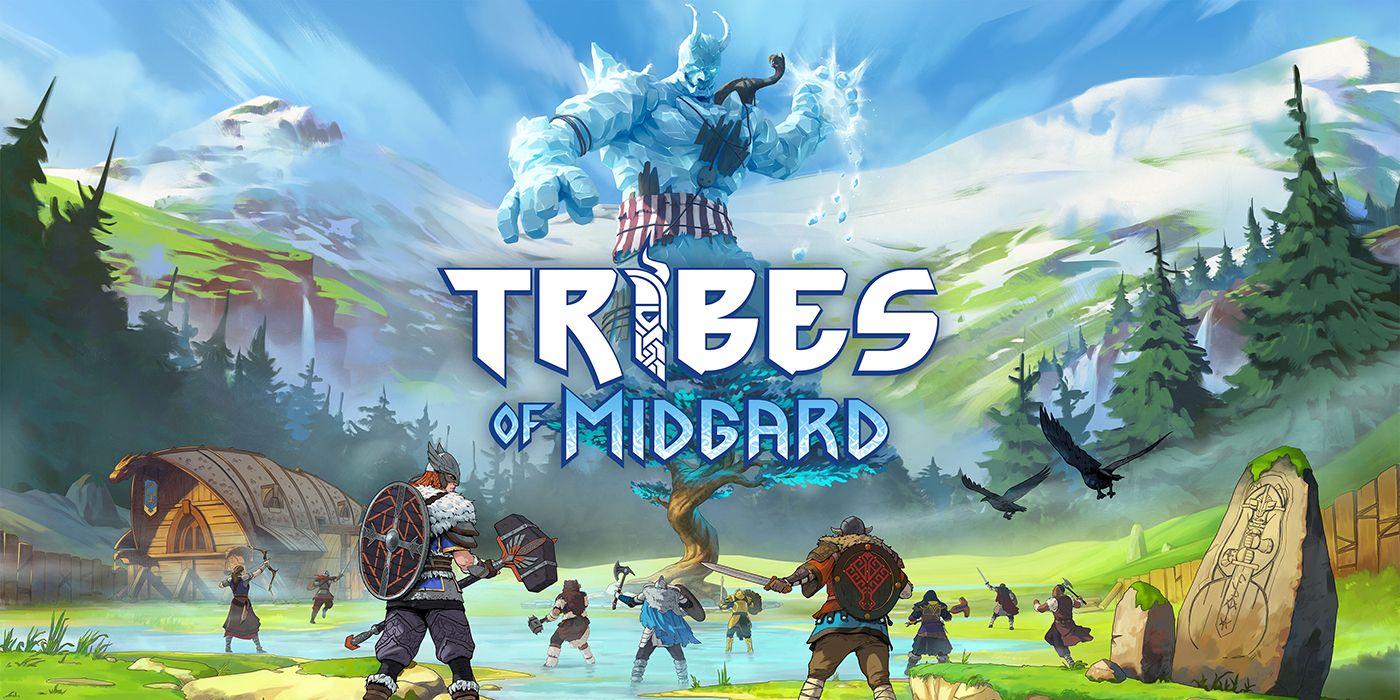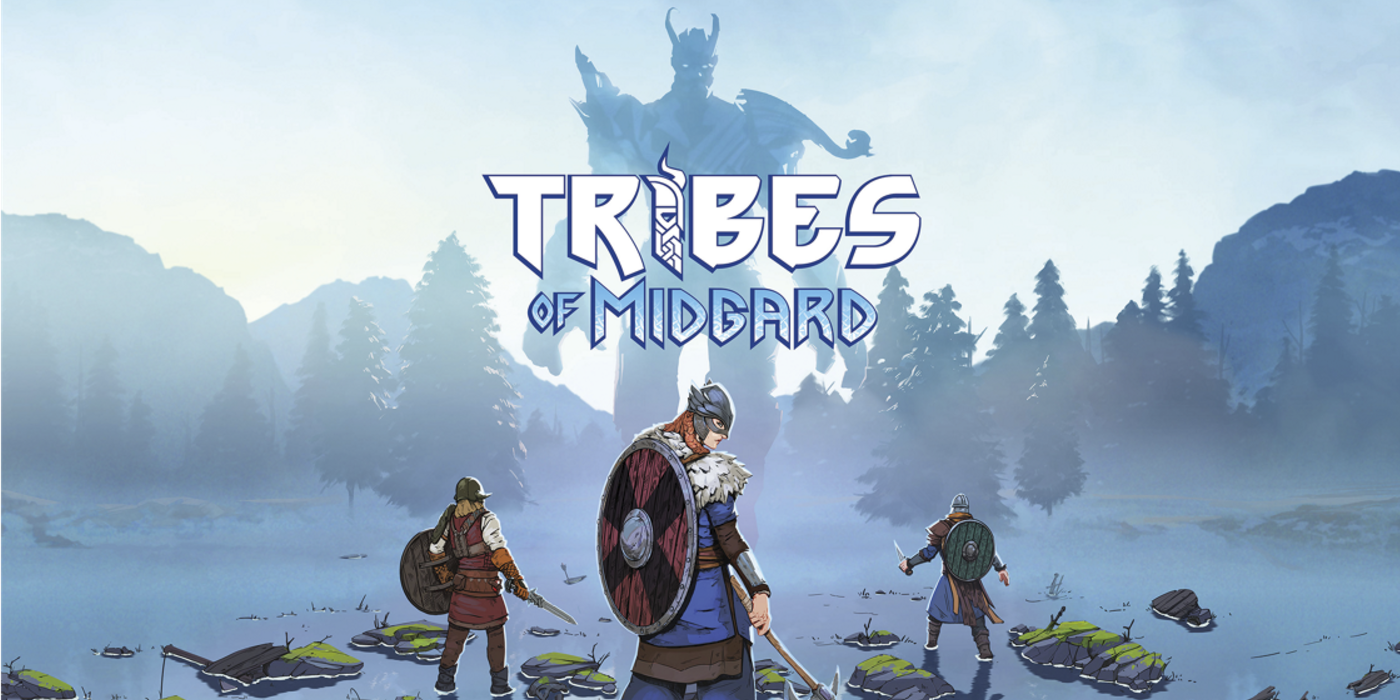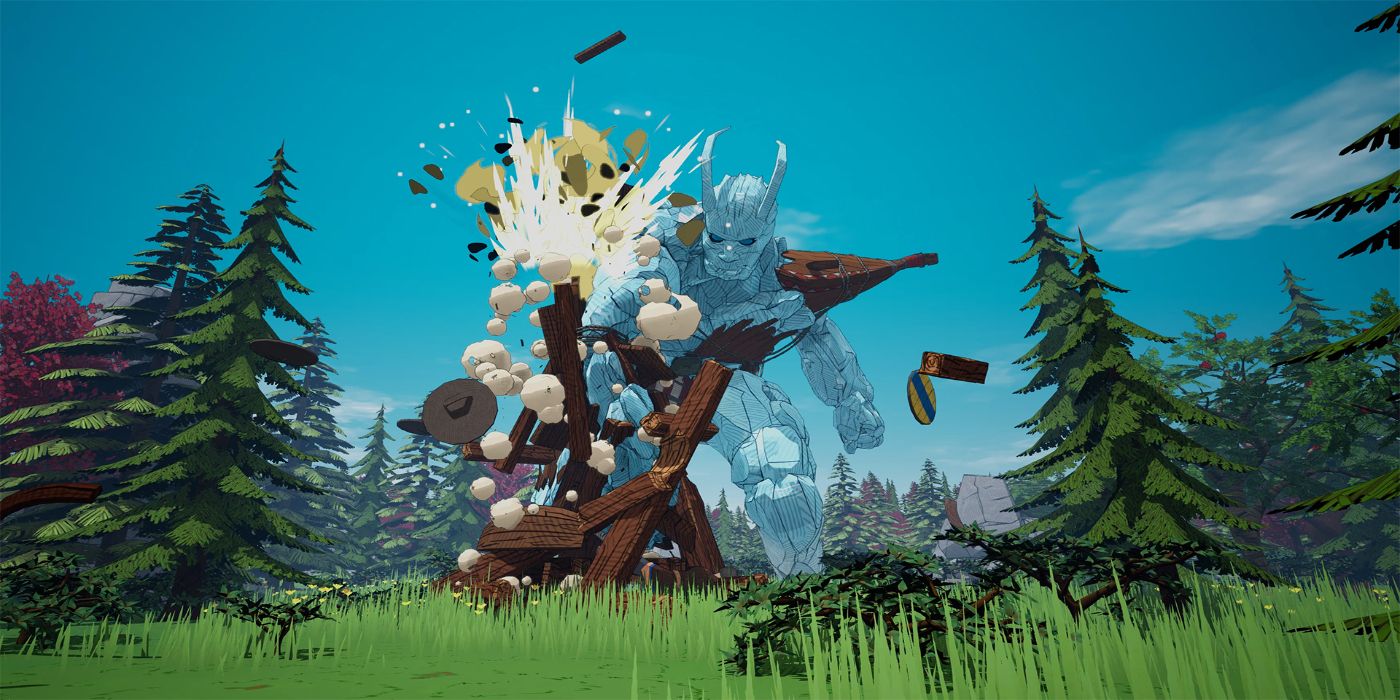
Tribes of Midgard is an upcoming action-adventure RPG that puts players into a procedurally generated open world, where they must protect the Seed of Yggdrasil from being destroyed. The player will have to hunt for resources and craft the best gear they can if they want to get a leg up on the Giants who are slowly making their way across the map. The players will also have to deal with dark figures from Helheim and other factions that want to initiate the end of the world. Whether the player can fend of the evil forces or succumbs to the Giant's might.
As one of Odin's warriors training for Ragnarok in Tribes of Midgard, the player will have to learn to adapt to their new realm. However, they won't have to do it alone as they will be able to bring up to nine of their friends into this realm with them. From the get-go the Einherjar, Odin's special military force, are training for Ragnarok. If they can't work together to defend the Seed of Yggdrasil, Recently Game Rant was able to sit down with Julian Maroda from Norsfell Games and ask some questions.
RELATED: The Outer Worlds 2 is Basically Pulling a Mass Effect: Andromeda, But That Might Be for the Best
Game Rant: Did you learn anything new or interesting about Norse mythology while working on Tribes of Midgard?
Julian Maroda: I was always a big fan of Norse mythology, so it was an easy choice for us to make. It is also something that's quite interesting, is the amount of games and various media that are now using Norse mythology as a basis.
When we first started developing Tribes almost four years ago, at that point there was barely anything about Norse mythology in media and then you had the Thor movies, Assassin's Creed, then you got God of War, and then Valheim. It was like we all that impression that Vikings were gonna make a comeback.
I think we all kind of sensed that there was something there. It's a mythology that people know, but not so much, not enough. It's really part of our culture as people living in the West. There are things that, maybe you're aware, but there are the days of the week in English. There's Tuesday, Wednesday, and Thursday. They're all based on Norse names, it's Tyr, Odin, and Thor.
Not many people know that, there is such a huge influence from Norse mythology, especially in language. It's kind of a shame people know so much about Greek mythology and Roman mythology, and so little about Norse mythology when you see the impact.
GR: Are the seasonal events based on a calendar year or an in-game year?
JM: We're gonna add regular updates of the game to fulfill that vision, those updates will be free and, more importantly, they'll be made with the community. In the sense that we're always listening to what the community has to say about the game, that's how we got to where we are. We're extremely thankful and grateful for that awesome community we've built.
We even have a dedicated program called "The Midgardians" of super-fans. It's awesome, we have running gags, and then we put those gags into the game. They're like "We can't believe you guys did that." It's a meme inside the game that only they understand. So, yes we're very close and tightly knit with them. As Norsfell, forging new genres to bring people together is not just about together in the game, it's about together making the game as well. That's why for us it's critical to listen to that community feedback.
That's why we don't want to share too much about what's coming next, because of course we have plenty of ideas, but we might move some of these ideas ahead or have some new ideas coming from the community that we want to implement very quickly, so that's why we don't want to commit too soon. It's gonna be largely based on the reception, what's the most critical thing needed? What does the community want? And we'll go from there.

Q: What led to the decision to cap the co-op players at 10?
JM: So we debated a lot around that number. We did not want four because four is like the classic co-op that you see everywhere. For us to go back to what I was saying about the sense of awe and the sense of scale, it was very important to have that kind of communal experience and to go with that community aspect.
Being a part of a tribe of four. I mean it's kind of a tribe, but it's a small tribe. Being a part of a tribe of 10 is already much better. So its a lot of various reasons we landed on 10, which we think is a super sweet spot. It's totally playable in solo, but I would say the best way to experience it is to still to play with 10 characters because then you get that sense of scale.
It's an action RPG, so people can really specialize in classes and with what they craft, so everyone can have a role. How we manage the gap between one and 10 players is through the auto-scale system. So at the beginning you want the game to fully be playable solo but also fully playable with 10 players.
So we have that system of auto-scale that plays on over 20 parameters, where even if I start a game and some more people join, the game changes in terms of difficulty. If the players leave, it changes back. We think we found a pretty solid sweet spot and approach so as to make it really appeal to all kinds of groups. It's super fun no matter how many of you there are, although 10 players is pretty great, for sure.
RELATED: Valheim: Norse Mythological Creatures That Would Make Great Additions to the Game
Q: Is there a reason you went with a brighter Norse world as opposed to a darker one like Valheim?
JM: I think it's very important to understand that, for us, survival games, every human understands the concept of survival, so it's very easy to communicate. What we didn't want to do is to make survival kind of a chore. Too many things to manage, dying of thirst on your first 10 minutes of play because couldn't find some water and you're like "What the hell is going on?"
We wanted to get rid of all of that, and so that's why that whole individual survival will be transferred to the community. We wanted to make sure we would make it more approachable, in a sense. We got rid of things like hunger, thirst. That concept of the individual survival into the community is in the shape of the World Tree. Yggdrasill, the seed of the World Tree, in the center of the village.
That's what you need to protect, and so, all of a sudden it created that flow of "Well, I don't have to worry about eating, I don't have to worry about my thirst, or how much I carry. I'm just having a lot of fun." And also we try to empower the players very much because it's not just like in Don't Starve, where you're literally trying to not starve.
Which is great. But what we wanted to do is look, you're an Einherjar, you're not a human, you're a glorious Viking hero. We don't want you to feel like that (struggling.) You can, in some senses, but you can also craft those awesome weapons with legendary spells and like almost bazooka your enemies if you want to because you have those powers. The gods are behind you so it's always that duality between survival and action-RPG that creates a game that is quite different from games like Valheim, which is another amazing game. But it's quite different. Yes it can appear a bit similar, but it is very different.
Q: Who is your favorite Giant, and why?
JM: I like all my children equally.
They're inspired by real Norse mythology, and they're all also unique. Every one of them has some different abilities. Not just abilities, but some ways of interacting with the players and how you approach these fights that make them very appealing. At the moment we have four giants. As we keep on expanding, we'll see where we go.

Q: What inspiration does Tribes of Midgard take from Don’t Starve?
JM: I think Don't Starve is on many levels, even down to the camera angle, has been a great inspiration. Things like the day/night cycle, resource collection, because Don't Starve, at the end of the day, it's a survival game with a top-down view. Most of these survival games follow the same logic, there is a lot of gauges to maintain, there is a day and night cycle, you have resource gathering, and crafting of your equipment, and Don't Starve checks all of these boxes.
It's more Don't Starve Together that inspired us, because beyond that we take inspiration from so many different games, because we're all gamers and we take from our own experiences too. Very quickly it became different, as soon as we added that mechanic of, "there is a tree in the center of your village you need to protect," and that's what you're feeding. That's the gauge you maintain, and that became the new genre.
Yes, while we're using a lot of the codes of survival games, it makes it much more open to try. Even if you play with two or three players, if you die as a player, it doesn't have much of an impact. You just respawn, lose a bit of resources, and that's it. But your altogether tasked with the fact you wanna protect that seed, you wanna keep it alive, so if one or two players aren't doing their job and the two others are like "I have your back this night, but next night you come defend," it just creates something that is much easier to manage. Because you're sharing, not the burden, but the goal of maintaining that Tree of Life instead of each individual having to maintain your own ecosystem. Here, it's the village ecosystem that you're trying to maintain, and that makes it much more accessible for a wide range of players.
Q: What was the most challenging part of the development?
JM: The game runs on dedicated servers, so right from the beginning we didn't want to go with the host peer to peer kind of a approach, in order to offer the best experience for our players. Having such a large online infrastructure for a small team, so we started working on this game when we were at seven, now we're 27. For a small team to do a full-on multiplayer game running on dedicated servers, and being able to push global updates across all platforms, it was quite challenging. We got there, it's working very well now, but when we started looking at that as a small studio is daunting.
Q: What’s the easiest way to get your first set of gear in Midgard?
JM: When you start, you start pretty much naked, because you come down from Valhalla. But along the way you lose a bit of your gear, so you start pretty much naked. First thing you wanna do is harvest basic materials, so we're talking flint, branches, that allows you to the craft a pickaxe and wood axe that lets you get better resources to make better equipment.
That being said, we have something too in the game to also renew your experience. A piece of equipment you equip from the main menu, where you have a lot of customization options by the way. But on the main menu, you have something called Starter Kits, and Starter Kits are things you unlock and will make you start a new game with these items equipped. Some Starter Kits will make you start with a sword and shield and some will make you start with basic tools. So you kind of get a head start in the game and it also kind of changes the early game your playing and renews what you wanna do.
Tribes of Midgard will release on July 27, 2021, for PC, PlayStation 4, and PlayStation 5.

